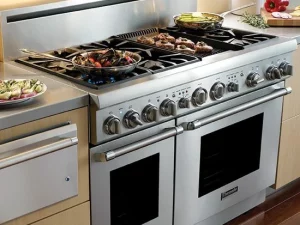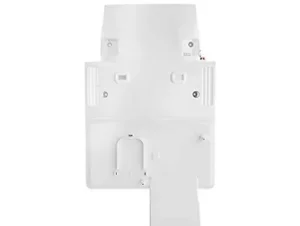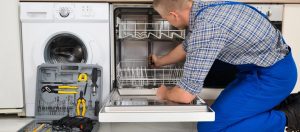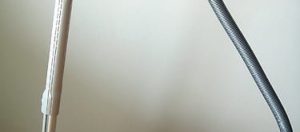
A fridge consists basically of four parts – the thermally insulated inside compartment that contains the items you want to keep cool, a motor, a radiator and coolant. The coolant does the work: as a liquid it is circulated and absorbs the heat from the inside capsule, turning it into a gas. The gas is then moved on to the radiator, where it is compressed and turned back into a liquid, the heat being transferred into the surrounding air.
A fridge is one of those modern conveniences we tend to take for granted, though it was definitely one of the most significant inventions that transformed our lives, particularly the way we eat and drink.
When you reach in the fridge for a cool drink or stash away your fresh food knowing it will keep unspoiled for several days, do you give any consideration to how this marvellous machine works?
Refrigerators were certainly hailed as a cool idea when the first one – a wooden box – went on show in London in 1843, patented by an American inventor, Jacob Perkins. It was not until around a century later, however, that fridges became freely available and adopted by the domestic market, manufactured by Electrolux. It wasn’t until the early 1960s that fridges took off as everyday appliances in the UK.
Fridge Faults
Nowadays refrigerators come in different styles – under-counter chillers, large side-by-side fridge-freezers, the cold cabinet with freezer compartment on top, the freezer chest, and so on. Different brands abound. They all work the same way, however, and are all prone to problems and faults to a greater or lesser degree.
Some of the more common problems that necessitate repairs to your fridge/freezer are:
- Broken or damaged door seals result in the fridge losing cold air continuously and you’ll probably see your electricity bill spike. Food will spoil quickly, frost will build up quickly in the freezer compartment, and the motor and compressor will be working overtime, reducing their lifespan.
- A blocked drain hole (usually found at the base of the back wall and designed to remove condensation or water spillage) inside the fridge are caused by a build up of food detritus. This causes water to pool in the bottom of the fridge, leading to soggy mouldy food. If the blockage is not too bad you should be able to fix it yourself by poking a pipe cleaner or cotton bud into the hole. If this doesn’t work, call in a professional fridge repair man.
- If the compressor motor is running continuously this could indicate a faulty thermostat, a leak of the refrigerant gas/liquid, or the compressor being faulty. Diagnosis and repair requires a qualified technician.
- When the fridge light fails to come on this could mean the bulb needs replacing, or the switch is faulty.
- If the light comes on but the Fridge/freezer is not working, you’ll probably need a new thermostat or to have the compressor replaced.
In most cases it is far less expensive to have fridge/freezer faults repaired rather than buy a new appliance.
To keep your fridge/freezer in tip-top condition, and to ensure its efficiency and longevity, keep it clean and make sure you study the manual that it comes with. Most modern appliances have emergency indicator lights and/or icons fitted that alert you to any operational problems, faults or function codes so that you can correct these before they result in more serious trouble. These icons and indicators vary between different brands of fridge/freezer, to it’s wise to familiarise yourself with what all the indicators on your particular make and model mean.
If you’re in any doubt about the health and wellbeing of your fridge/freezer, call in a specialist fridge repairer to take a look at it.





